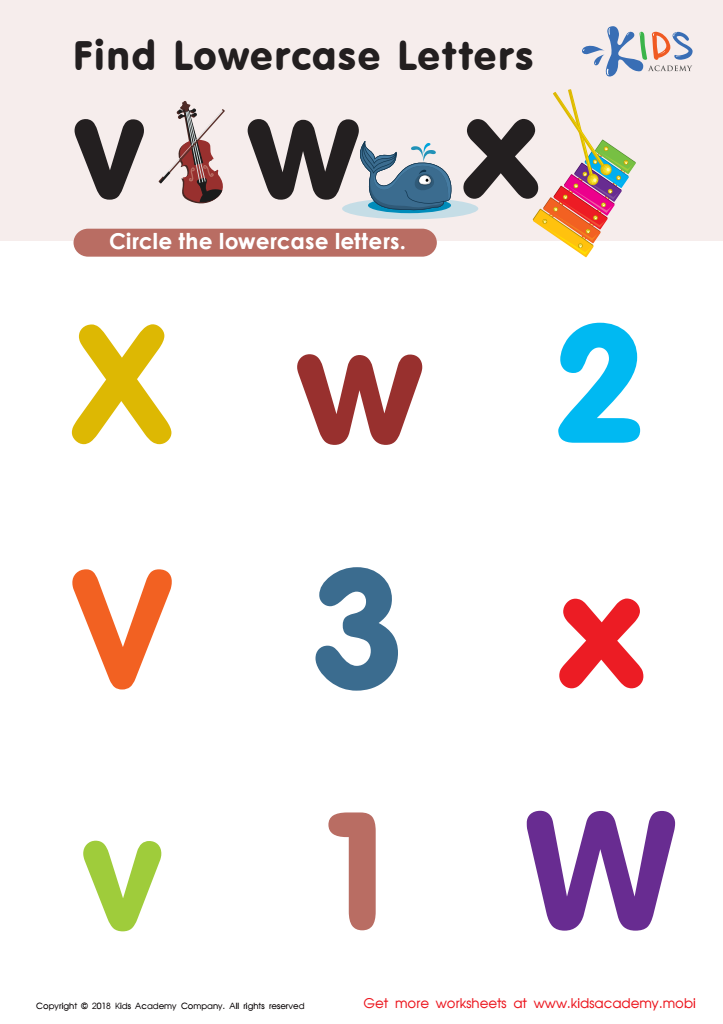Lowercase identification Lowercase/Small Letters Worksheets for Ages 3-5
5 filtered results
-
From - To
Help your child master the alphabet with our Lowercase/Small Letters Worksheets, perfect for ages 3-5! These engaging educational resources are designed to make learning lowercase letters fun and effective. Each worksheet focuses on letter recognition, tracing, and writing to build foundational reading skills. Ideally suited for early learners, our carefully crafted exercises support cognitive development and enhance fine motor skills. Kids will enjoy colorful, age-appropriate activities that hold their interest and keep them motivated. Give your preschooler a head start on literacy with our expertly designed lowercase identification worksheets – laying the foundation for a lifetime of reading success!


Find Lowercase Letters d e f Worksheet


Find Lowercase Letters y z Worksheet


Find lowercase letters a b c Worksheet


Lowercase Letters Search: Assessment Worksheet


Find Lowercase Letters v w x Worksheet
Parents and teachers should prioritize lowercase identification for children aged 3-5 because it lays a fundamental groundwork for early literacy development. During these formative years, children are incredibly receptive and are developing their language and cognitive skills rapidly.
Firstly, lowercase letters are more commonly used in reading and writing than uppercase letters. Most words in printed texts are predominantly in lowercase, so familiarizing children with these letters enhances their ability to recognize words quickly, thus improving their reading fluency and comprehension.
Secondly, early identification of lowercase letters aids in proper writing skills. Learning to distinguish and reproduce these forms helps children express themselves more effectively and prepares them for structured activities in school. It also refines their fine motor skills and hand-eye coordination, both crucial for writing proficiency.
Moreover, early mastery of lowercase letters positively impacts a child's confidence and enthusiasm towards learning. When children can identify and understand the building blocks of words, they feel more competent and motivated to engage with reading and writing activities, which are foundational for academic success.
By ensuring that children grasp lowercase letters early on, parents and teachers create a supportive environment for future learning achievements, shaping lifelong learners who view literacy as an accessible and enjoyable pursuit.
 Assign to My Students
Assign to My Students
















